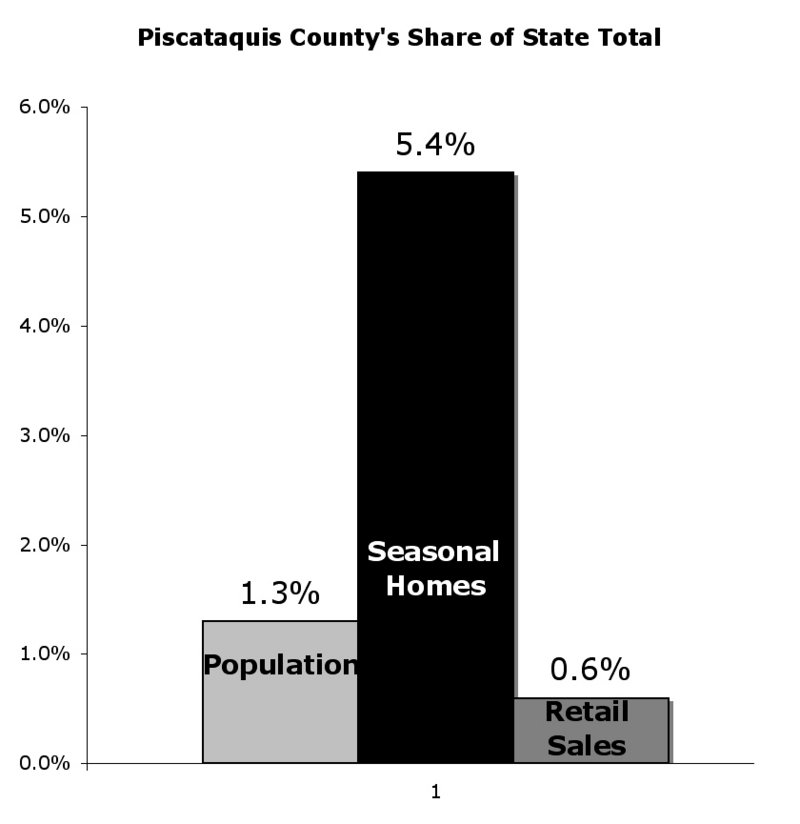The rain has ceased, the sun is shining, the visitors are coming. Maine is bracing for what everyone hopes will be a banner tourist season. Generally, from a public policy perspective, most of the attention devoted to tourism is focused on attraction. How do we get people to come? What’s the best advertising pitch? How does Maine distinguish itself from other potential destinations? What is our “brand” and how do we develop it?
All that is appropriate from an outreach perspective, but it’s only half the story. The other half is what do visitors do when they get here? And this challenge, particularly for Maine’s rural areas, presents a potential for addressing the long-term economic decline in the region’s traditional manufacturing base. Consider the example of Piscataquis County as presented in the graph at right.
Piscataquis County, with 17,535 people, has 1.3 percent of the state’s total population. But with 6,397 seasonal homes, it has 5.4 of the state total. That’s 36 seasonal homes for every 100 census-designated full-time resident, far above the state average of nine seasonal homes per 100 residents.
Yet in spite of these, at least potential, seasonal contributors to its commercial vitality, the county has less than one percent of the state’s total taxable retail sales. Much of the reason for this disparity, of course, rests with the fact that both full-time residents and seasonal visitors travel outside the county to larger urban shopping centers to buy their provisions. It’s a natural consequence of the continued expansion over the past decade of regional malls and big-box stores.
Nonetheless, that spending gap presents a clear challenge and opportunity for rural businesses: How can they target their offerings and marketing strategies toward the visitors they know, or should know, come in such numbers to enjoy life in the Great North Woods?
The strategies are varied:improve customer relations, improve knowledge of the customer, use social media to market to the customer, adapt product offerings, store hours and online accessibility to accommodate a visitor’s schedule and encourage patronage even when the visitor is at his/her home away from Maine. The major point is that Maine’s rural areas need not play only the victim to the forces of globalization. The same forces present opportunities for new development to those willing to search and work for them.
Charles Lawton is chief economist for Planning Decisions, a public-policy research firm. He can be reached at:
clawton@planningdecisions.com
Copy the Story Link
Send questions/comments to the editors.



Success. Please wait for the page to reload. If the page does not reload within 5 seconds, please refresh the page.
Enter your email and password to access comments.
Hi, to comment on stories you must . This profile is in addition to your subscription and website login.
Already have a commenting profile? .
Invalid username/password.
Please check your email to confirm and complete your registration.
Only subscribers are eligible to post comments. Please subscribe or login first for digital access. Here’s why.
Use the form below to reset your password. When you've submitted your account email, we will send an email with a reset code.